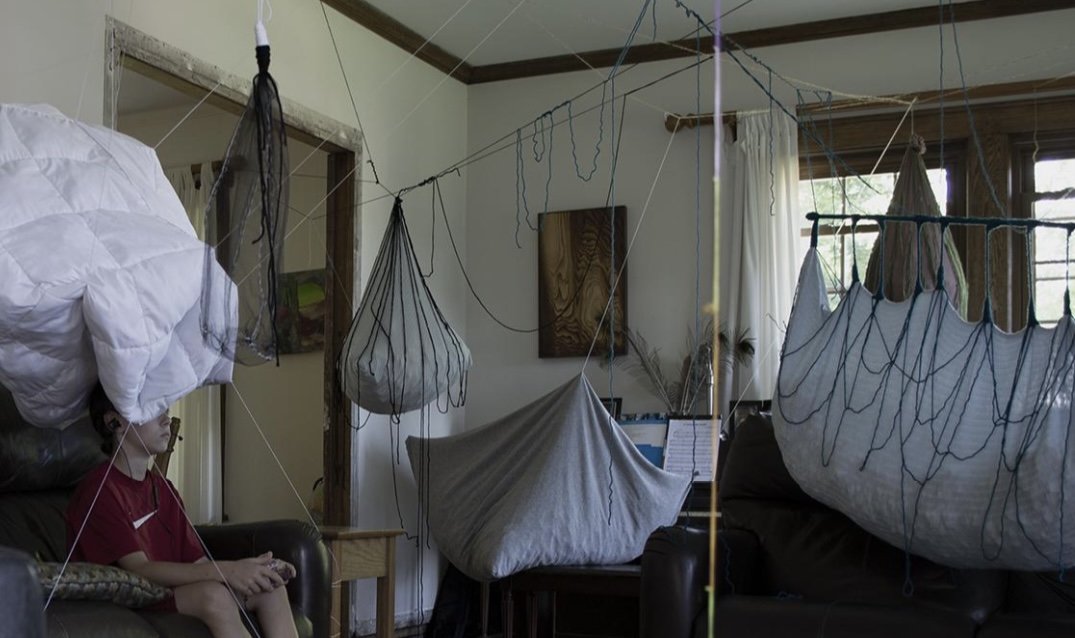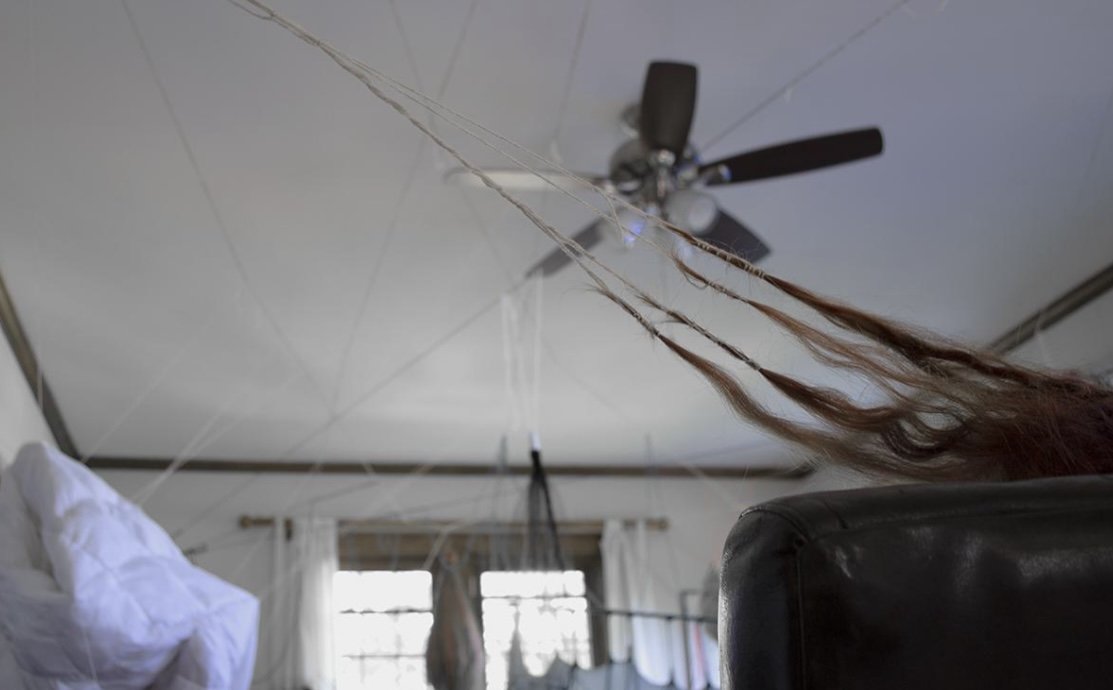Queer Excellence: Facts, Fears, Space, & Growth
By Brooke Day
My name is Brooke; I am a member and co-founder of Zero Space Collective. In my art practice, I work interdisciplinarity, using diverse materials and modalities to create enchanted-replication installations, experimental sculptures, and multimedia arts. As an individual, I love absorbing and deconstructing film, science fiction, and philosophy. I enjoy kayaking, hiking with my dogs, and listening to podcasts. I use embroidery to relax, stand-up comedy to laugh, and deep one-on-one conversations to enrich my curiosity. I am also a queer, female-presenting person. I grew up in East Tennessee, an oddball from every angle. Growing up in the South with my eccentricities has presented many challenges, but this story focuses on art and self-actualization.
Before I begin my story, I will note that the South is no villain for its "occasional resistance to change." Change is scary for us all. Hate and judgment do nothing to alleviate fear. Moreover, this country continues progressing in representation, understanding, and acceptance, but I digress.
When I was a child in the 90s, I experienced my queerness through the guise of confusion, shame, and terror. I never told anyone those uncontrollable thoughts and feelings but eventually began finding allies. As a teenager, my LGBTQ+ community was unsurprisingly sparse in a town of 2,500. The population was only a minor accessory to the panic that complimented my rationale of uncomfortably residing in a closet shielded from the sight of family and many of my peers. However, select individuals showed me care and safety, providing space to investigate my enshadowed self.
Reaching young adulthood was a risky path of escapism, impulsive decisions, and careless comforts. My queerness remained masked beneath the familiar "party girl" veil. Inside, I felt like an imposter, weak and stupid, burying my perpetual shame to ensure my survival. All the while, I experience love and growth, heartache and loss, but alone and scarcely acknowledged. My first girlfriend and I would meet under an overpass. After a short climb down, surrounded by rushing cars above and below, we were alone, together. We found sanctuary in this place tucked from a reality that didn't understand, but thatrefuge didn't last long.
I rationalized never coming out, convincing myself I was more comfortable letting folks make assumptions than expressing my truth. I suppose I figured it was better not to be disowned than to find a community and a family that would love and accept an authentic Me. And there again is that fear, a fiction we design in our minds.
It was not until my 30s that I began developing a sense of confidence and validity in my queerness. I even confronted most of my family. Coming out to my family led to a challenging year with a genuine mixed bag of reactions, but I persisted. Shockingly, that leap of faith has led to a greater sense of security than I have felt, and an ability to address the queer context that often resides in my artwork.
Paralyzed Space: Boy Playing Video Games, 2020. Brooke Day.
Several years earlier, I explored identity and its reflections in sacred, shared, and public places and how it can expand, congest, and encompass our space.1 During my research, I began creating photographic installations of domestic spaces occupied by enigmatic forces of reflected consciousness engaging with human counterparts. These soft sculptures were sloshing out of my brain, searching for a resolution of form and a comprehensive narrative. However, I knew these amorphous malformities, even in their initial phase, were some kind of semi-sentient creatures, feeding the human mind and its experience while devouring the autonomy of its host.
Paralyzed Space: Thought Feeding, 2020. Brooke Day.
One of these installations was Intimate Space, a simulated moment of explorative intimacy between two female-presenting performers acting as new lovers. The space is a bedroom with an atmosphere congested and overwhelmed by the sculpturally represented limitations of social expectation, learned fears, and the unyielding dread seeping from the lovers' minds. Through a series of photographs, a story unfolds in an overcrowded space with an obstructed will. As the lovers start to surrender to their lust, we see a relationship between the subtle retreat of the creatures and the lovers' fluctuating apprehension, vulnerability, and submission.
Intimate Space: Unwanted Thoughts, 2020. Brooke Day.
The lovers share this space, shielded from judicial glances, and their worries and pain fade into a new type of space. The space is shy and explorative, gentle but unruly. It is a co-meditation with a fellow human where the reflections become quieted, the consciousness returns to the mind and body of the hosts' corporeal form, and nothing matters but that moment of absolution in pure acceptance.
This installation, this narrative, for me, was the creation of a queer space taking the form of intimacy, vulnerability, and autonomy.
Intimate Space: Touch, 2020. Brooke Day.
Considering it now, I realize that the installation I designed was a reflection of my battle with self-acceptance as a queer person.
In 2023, more than three years after the creation of this photographic installation, I was invited to participate in a queer excellence exhibition in the Pride Center of a state university. Mere days after the exhibition's opening, controversy stirred. A university work-study student found themselves uncomfortable when faced with a curated quadriptych from Intimate Space. The student described the images as disgusting, traumatic, and pornographic. With some hesitance, I agreed to remove the photographs from the exhibition and replace it with a response work. With the support of the curator and coordinator of the space, the quadriptych was left on the wall until I could complete an entirely new piece for the already open exhibition. Several days later, we received a threat of legal action. The offended party found our attempt at compromise unsatisfactory and demanded immediate action. That day, someone unceremoniously removed my work from the wall and left it unpackaged, unprotected, in a corner on the floor of an office where it took me a month to track down.
Installation view: Queer Excellence II. Intimate Space: Select Quadriptych, 2023. Brooke Day.
At this point, I felt utterly defeated, swept back into the form of my childhood self. I feared the loss of my supporters and mentors, my job, and the possible repercussions for other artists in the community. I found myself bound by an all-too-familiar shackle and failed to replace the works in the exhibition. I regret not fighting for my newly found sense of safety. I mourn the loss of an opportunity to create, share, and enlighten. I lament the lack of security in even a designated LGBTQIA+ space. I feel ashamed that I let my fears stifle my voice, but I can forgive myself for reacting to the frailty of fright, rejection, and persecution. Change takes time.
Unfortunately, even many LGBTQIA+ spaces are not inclusive of differing experiences. We are still growing and perhaps will always be. However, I am ultimately grateful for the gift of reflection the incident provided me. The opportunity to respond to unjust censorship with art may have slipped away, but a deeper understanding of the repressed aspect of my narrative reflected in this work is invaluable. In the end, my drive to learn, create, and keep doing better as an artist, ally, educator, and queer human being will not be stifled.
Censored: Queer Excellence?, 2023. Brooke Day.
What I hope you take from this story is that we are ever-evolving. Leading with anger only promotes more anger, but perseverance and the intention to lead with curiosity and empathy encourage advancement. We as a country, as humans, have a long way to go toward equity and inclusion, but working not to be restricted by shame and fear is a leap in the right direction.
Thank you to Zero Space for providing a platform to share this story. Thank you to the unnamed curator of that exhibition for unwavering support. Thank you to the student worker who succeeded in having my work removed from the show. This person's actions felt hurtful and misguided but ultimately influenced introspection that provided greater context for my current and future work. This incident challenged me and gave me space for contemplation that may offer visibility for other diverse experiences. Though I disagreed with the fear-based evaluation of my artwork, most of all that is pornographic, the incident ultimately gives me hope for the future. Not only has this challenge helped prepare me for future controversy, but this student saw something they wanted changed; they rallied support and enacted their goal.
I look forward to sharing a future with a generation willing to fight for change and, even more, a future where that fight can be for positive social change led by the desire for equity, representation, inclusion, and space for curiosity.
June is about pride. LGBTQIA+ is about love and inclusion. Every day that we wake up, experience joy, embody our authentic selves, and practice empathy is a tremendous feat of activism.
Thank you, and HAPPY PRIDE!!






